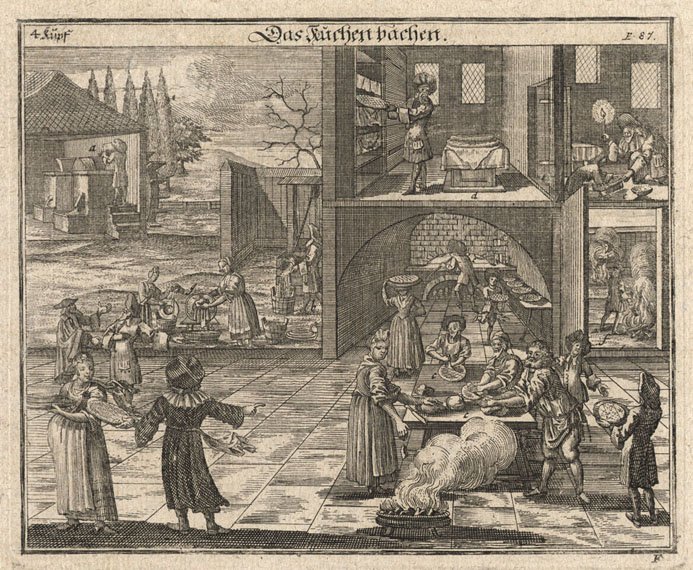Passover
Preparations and Matzoh
Pesach, or Passover, is a weeklong festival commemorating the Exodus of the Jews from Egypt and their release from slavery. A central symbol of the holiday is matzoh, or unleavened bread. Because the Israelites had to flee Egypt before their bread could fully rise, they ate flat bread throughout their sojourn in the desert. Jews continue to commemorate that episode by removing all leavened products (chametz) from their homes before the beginning of Passover. In place of leavened bread, Jews may eat matzoh. Unlike chametz, the flour in matzoh must not be in contact with water for more than eighteen minutes, so that it does not ferment before baking; and no yeast is used.
Images in the Sondheim collection attest to the widespread and continued importance of matzoh in Jewish life. Wherever there were Jews, even in small numbers as in India, strategies for matzoh-baking were devised. While the techniques and situations for baking matzoh have varied over the centuries, its presence at the Passover Seder and throughout the week of Passover has been a constant in Jewish life. By the late nineteenth century, its production and distribution had become highly industrialized.
Seder
Like the Sabbath, Passover is observed primarily in the home. Central to the celebration of Passover is the Seder. Seder means order, and involves the reliving, through recounting, of the Exodus from Egypt. After sweeping the last bit of chametz from the home, the Passover Seder begins, including an explanation for the symbols of the holiday laid out on the Seder plate. Texts provided guidance on the appearance and offerings of the Seder table, setting the Passover table, arranging the Seder plate, and the foods to be consumed by the gathered family and friends.
The Haggadah
The text used for the Passover Seder is the Haggadah (plural Haggadot) or compilation of biblical passages, prayers, and hymns. The book tells the story of the Exodus from Egypt and explains the symbols and practices of the holiday. The Passover Haggadah was first compiled over two thousand years ago; and while the story has remained stable, narrative and illustrative styles have changed over time, and commentaries and songs have been added. Since traditionally each Jewish household held a Seder and owned a Haggadah, it became one of the most familiar books in the Jewish home.
The Haggadot in this section suggest the wide variation and distribution of the book. There are two Dutch editions and three German editions. The oldest is the Haggadah from Amsterdam, which dates from 1724; others include a facsimile of the 1846 Haggadah of the Bene Israel congregation in Bombay, India, and a Sefardi Haggadah from Livorno, Italy. Although these books are all illustrated and highly decorative, they were clearly intended to be used and read. The stains on the pages of some - a typical fate of books used during meals -are evidence that they carried out those intentions.
To further demonstrate the importance of the Haggadah within the Jewish household, this section includes the Haggadah that belonged to the collector's father, Karl Sondheim. The book, published in 1913, came to America with Sondheim when he emigrated. The repairs to the book's cover bear witness to the extensive use and personal value of this volume.






